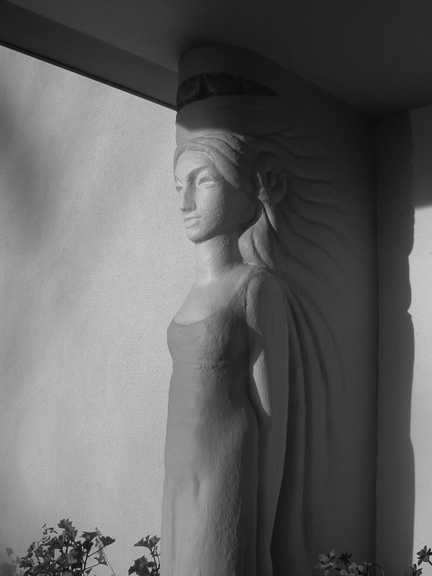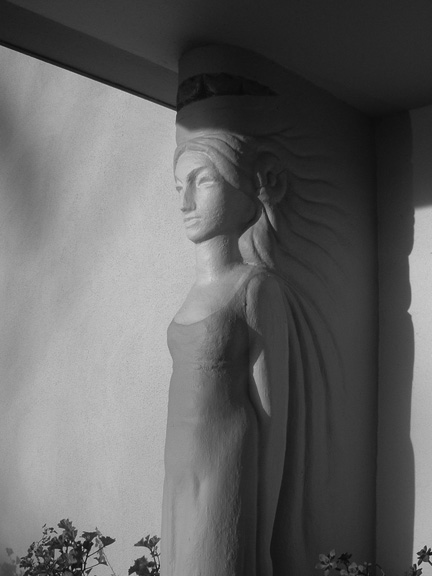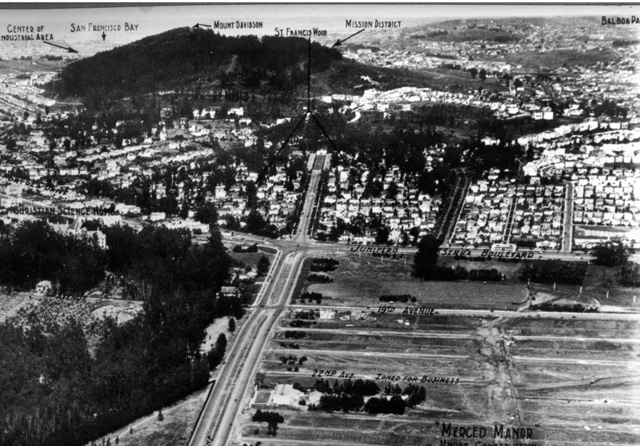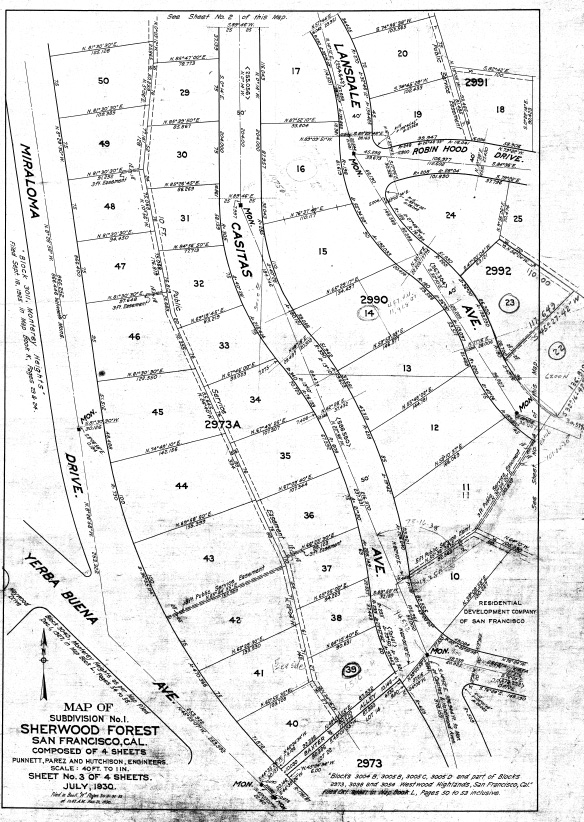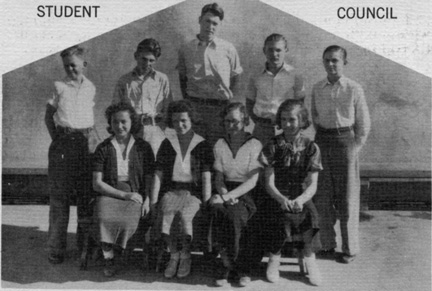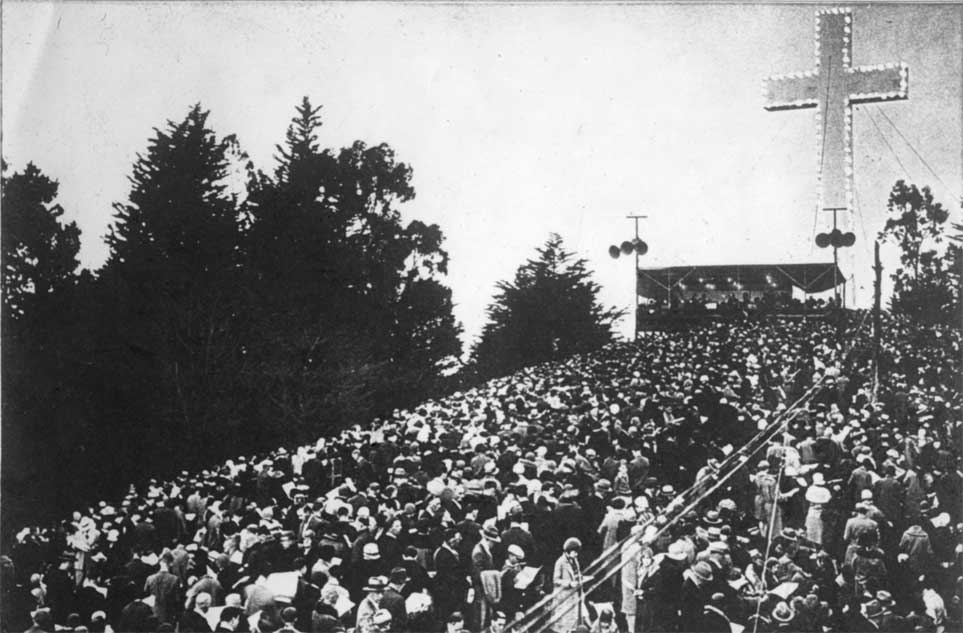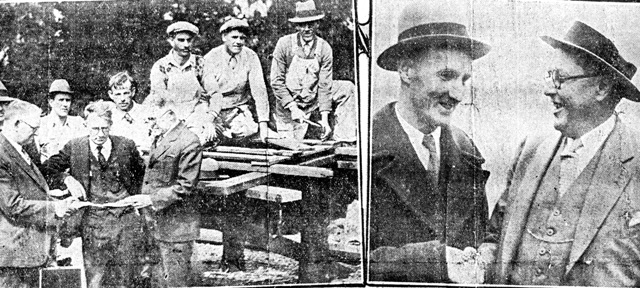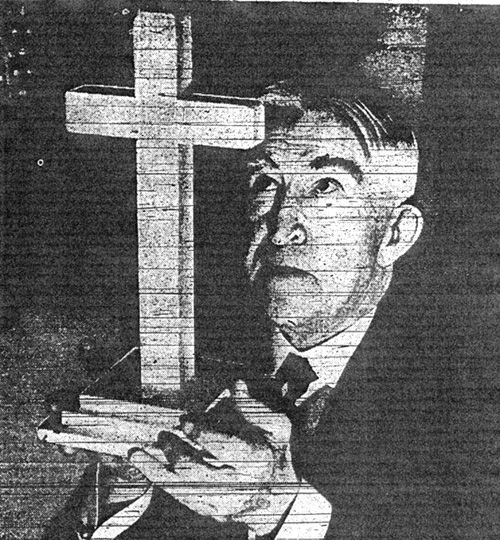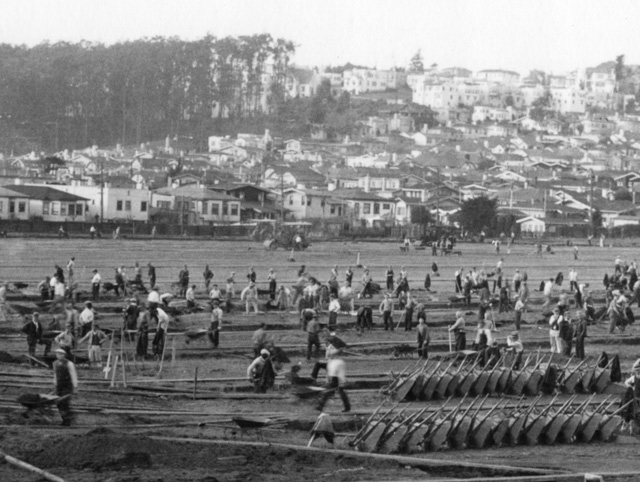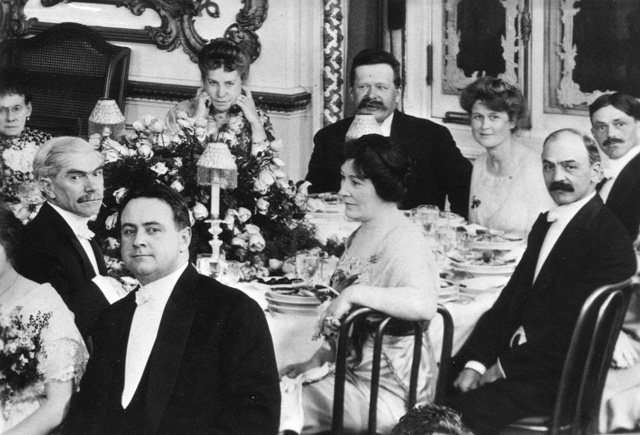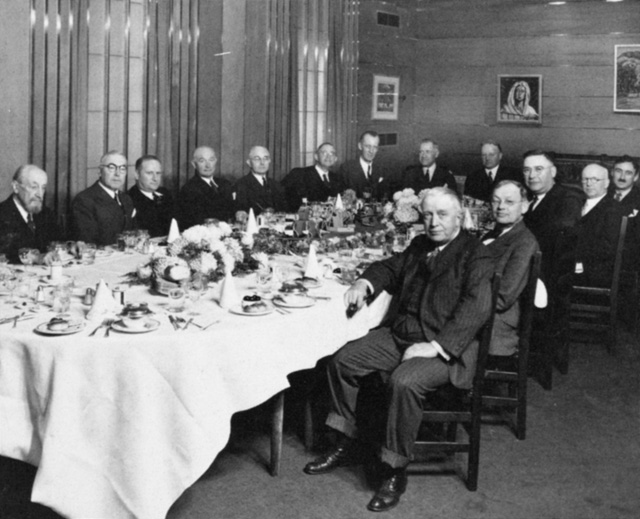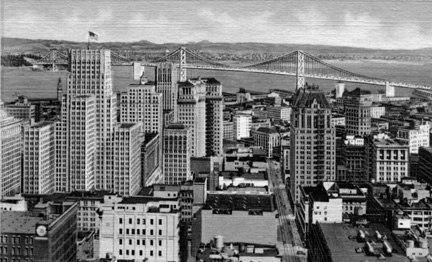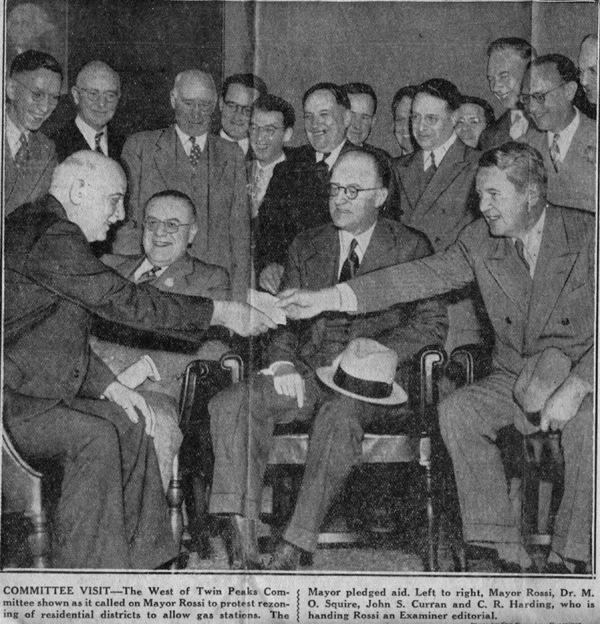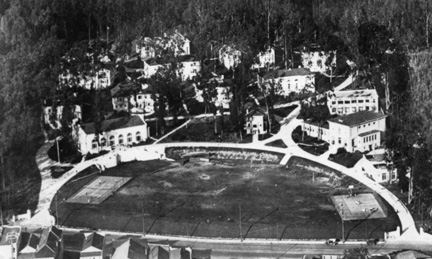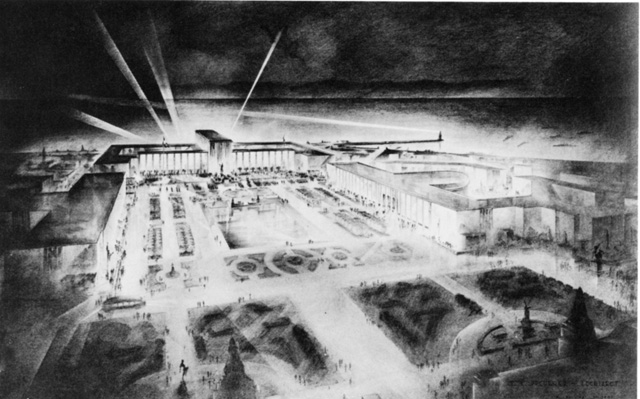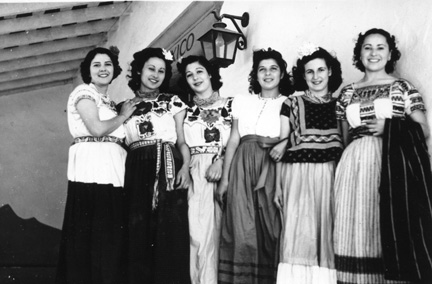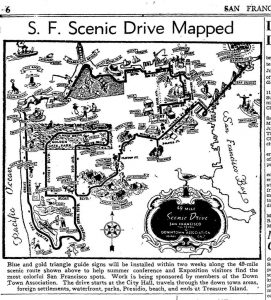The Great Depression and Public Works Projects to Keep the American Dream Alive
San Francisco in the 1930s
“Faced with a ruinous depression, Californians of the 1930s managed, amidst some social misbehavior, to accomplish one of the most creative decades in the history of any American state. They built bridges and hydroelectric systems which will last for a thousand years…They built schools, armories, libraries, and airports which remain serviceable as well as architecturally significant. They cleared paths through public parks and wilderness preserves along which hikers still tramp.” (Garden project below to feed the hungry in 1938. Courtesy The Living New Deal Project www.lndp.org.)
“And somehow – despite clashes of Left and Right, despite horrendous suspension of civil liberties – they never completely detached themselves from the American tradition of constitutional law and fair play. Nor did they abandon the public realm; indeed, in their politics and their public works, their literature and art, they brought public values into a golden age of expression. During the Great Depression, Americans saw their way through the most trying ordeal possible short of invasion or civil insurrection, and they prevailed. They created a version of American culture on the Pacific Coast, which more than a half century later, continues to intrigue the rest of the nation by its resourcefulness and diversity. They endured and so did the California Dream.” Kevin Starr, Endangered Dreams – The Great Depression in California
This aerial view in 1930 shows Sloat Boulevard, center, running east toward a still tree covered Mount Davidson.
Map dated July 1930 (page 3 of 4 – west of Miraloma Drive) of the new Sherwood Forest neighborhood on Mt. Davidson developed by August Lang and drawn by Punnet, Parez, and Hutchinson, Engineers. (Courtesy John Pflueger).
Aptos Middle School is built in 1931 at 105 Aptos Street for the families West of Twin Peaks. Carol Channing, first row right, in 1932, Secretary of the Seventh Grade. At 82 years old, Carol would marry Aptos classmate Harry Kullijian in May 2003. Sweethearts during their Aptos days, Carol wrote in her 2002 memoir, “My adolescent years were spent in Aptos Junior High (now Middle School). I ran for vice president of the entire student body. I gravitated to the school band because I needed them for my campaign song. The leader of the school band was Harry Kullijian. I was so in love with Harry I couldn’t stop hugging him.” Mount Davidson Manor resident, Bill Brown, attended and graduated at 20 years old from Christian Science Sunday School and Carol Channing was one of his Sunday School classmates. (Courtesy Margie Brown Whitnah.)
With the growing popularity of the sunrise service, a larger 40-foot high Mount Davidson Cross with 300 lights to be lit by Mayor Rossi is built atop Mount Davidson in 1932.
Looking over the plans are Clarence F. Pratt, Adolph Anderson, and James G. Decatur, with workmen in the background from Carpenters’ Union No. 22 who donated their labor led by James Ricketts and Archie Mooney. Kevin Starr writes, “San Francisco activists brought organized labor into being in what soon became the strongest union town in the country.”(Courtesy Bob Deliso.)
With 32,000 attending the 1932 sunrise event broadcast coast-to-coast on CBS radio, George Decatur, pictured above, starts a campaign to realize his dream of building the world’s largest cross atop Mount Davidson.
Kevin Starr writes, “Along with the rest of the nation, California experienced the therapeutic presence of the federal government operating through public works during the Great Depression…the federal government… initiated in California during the 1930s an epic of construction without precedent in the history of the state. These public works, in turn – the Hetch Hetchy Aqueduct, the Colorado River Project, the Central Valley Project, the San Francisco-Oakland Bay Bridge, the Golden Gate Bridge, together with innumerable projects of flood control, urban improvement, wilderness management, and military construction – met practical needs of long standing.” Labor-intensive public works construction of a reservoir that would never hold water in Balboa Park, below Mount Davidson, in 1933.
Elizabeth Fotheringham, center front, in 1914 at the Fairmont Hotel for the Horticulture Society Annual Banquet, encouraged her daughter, Sally Grusser to buy a home in Miraloma Park. Future Mayor Angelo J. Rossi, on her right, is credited for successfully shepherding the city through the Depression and making San Francisco among the first cities to receive Works Progress Administration funding, as well as, getting employment for all residents eligible for the program. (Courtesy Elizabeth Mettling.)
During the greatest depression in American history, San Francisco and her neighbors built two of the greatest bridges in history. Henry J. Brunnier is hired to do the engineering for the Mount Davidson Cross while consulting with this group of architects and engineers chaired by Timothy Pflueger on the construction of the San Francisco-Oakland Bay Bridge. Completed in 1936, it is the longest steel high-level bridge in the world. The Yerba Buena tunnel has a diameter of 58 feet, which is the tallest bore in the world. Its foundations go deeper than any other bridge, 242 feet, which is bigger than the largest of the Great Pyramids and required more concrete than the Empire State Building. (Courtesy John Pflueger.)
Henry Brunnier had teamed up with architect George Kelham on over twenty significant projects, including San Francisco’s tallest buildings: the 31 story Russ Building in 1927 and the Shell in 1929, before coming together to build the world’s tallest cross in 1934. Randolph Delehanty writes about the Russ Building (with the flag on top) at 235 Montgomery Street. “The thirty-one story and tallest building on the West Coast until 1964 was the marvel of its day, with 1,370 offices and every conceivable service…It was also the first downtown building to accommodate the automobile; a 400-car garage was built beneath its Gothic exterior. The building is E-shaped with three wings to the west, permitting natural light and ventilation.” Historian Kevin Starr, “a skyscraper which asserted (and perhaps brought to conclusion) the preeminence of San Francisco as the business and financial capital of the Far West.”
After saving Mount Davidson for a public park, Madie Brown dares to dream that President Roosevelt will accept her invitation to light the new cross on March 24, 1934, because “his new deal has instilled the principles of the Golden Rule into American business.” Kevin Starr: “In the spring and summer of 1934 a coastwide maritime strike, headquartered in San Francisco, played out a powerful scenario of Left versus Right in Depression America. July erupted in fistfights, gunfire, and blood; and the National Guard marched into the city.”
The West of Twin Peaks Central Council organized in September of 1936 “to bring about cooperation and united action among all the home, civic, and improvement organization in the district known as ‘West of Twin Peaks.’” Members of the Council pictured here with Mayor Rossi in 1937 in opposition to the proliferation of gas stations in the residential area. “John S. Curran, president of the West of Twin Peaks Central Council, told the Mayor in straight-forward language that continued efforts to rezone the district were sources of ‘constant irritation,’ and would ultimately mean breakup of the district and destruction of its beauty.”
San Francisco’s Pacific Hebrew Orphan Asylum, created in 1894, opens Homewood Terrace on Ocean Avenue between Faxon and Ashton Avenues in the 1930s. This aerial photo from the 1950s shows the facility for 125 children, which included a synagogue, library, laundry, commissary, gym, workshop, and dormitories. Each “cottage” had room for 20 children, 10 boys and 10 girls, of varying ages, as a child would stay in the same location until they left the asylum. Children attended the local public schools: Farragut Elementary, Aptos Middle School, and Lincoln High School. (Courtesy Tasia Melvin.)
The completion of the San Francisco-Oakland and Golden Gate bridges provoked the organization and construction of a third momentous public work, the Golden Gate International Exposition on Treasure Island in San Francisco Bay,” Kevin Starr. Rendering of Esplanade and Lagoon in forefront of Federal building by Timothy Pflueger, Vice Chairman of Fine Arts, for the Exposition on Treasure Island. On the Board of Architects, Tim Pflueger was able to have several culturally significant projects created by the artists during the fair moved to San Francisco City College for permanent display on campus. (Courtesy John Pflueger.)
At the time of his death in 1936, George Kelham was Chairman of the Architectural Committee of the 1939-1940 Golden Gate International Exposition on Treasure Island. Ingleside Terraces resident, Esperanza Lupe Puente, (pictured under the lamp with Carmen, one of her four sisters) was working in the Mexican Arts and Crafts Pavilion at the fair from 1939 until it closed. She would marry William Robert Brown at St. Brendan’s Church and raise her family in Mount Davidson Manor. (Courtesy Margie Whitnah.)
The 49 Mile Scenic drive was created in 1938 by the Downtown Association to highlight the city’s beauty (including the Mt. Davidson Cross) and to promote it as a tourist destination. The route was also created as a way for visitors to see San Francisco while they were here for the Golden Gate International Exposition from 1939-1940.
Next: Chapter 5 World War II and Postwar Growth – Living the American Dream and Postwar Growth – Living the American Dream

